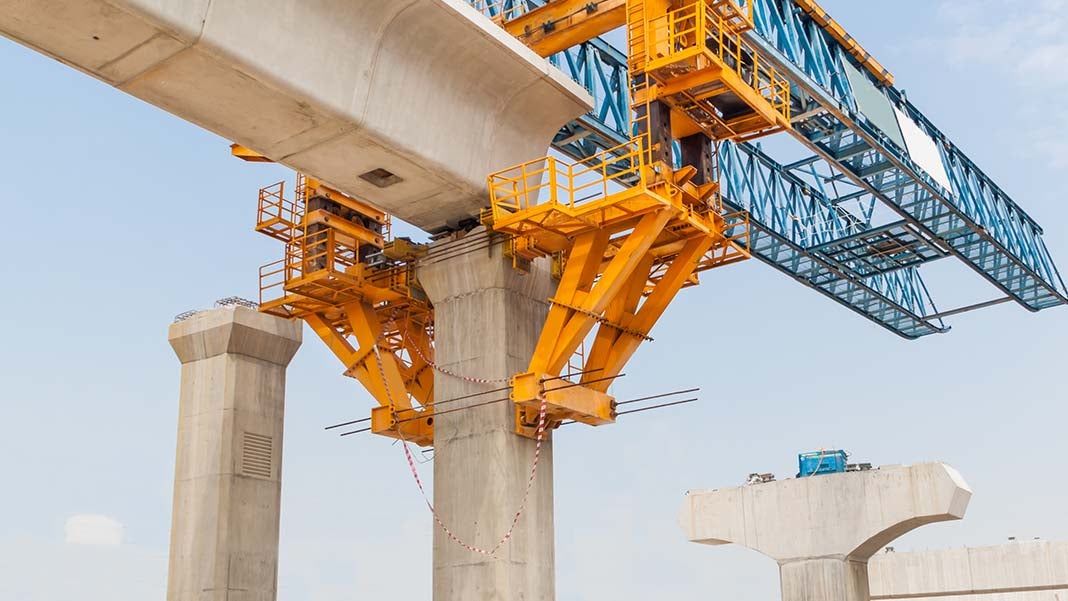3 Trends Changing the Future of Infrastructure Investment
By: Redshift

The world wants more infrastructure—a lot more. Whichever forecast you read, the numbers are staggering.
By 2020, China will have completed installation of 31,000 miles of high-speed rail networks. By 2030, homes will need to be built to accommodate an additional 165 million urban dwellers in India. And by 2040, 4,400 GW of additional power-generation capacity will need to be created to meet worldwide demand for electricity. No wonder it’s predicted by Global Construction 2030 that worldwide construction output will grow by 85 percent over the coming 15 years.
Thinking about how to fulfill this demand no doubt raises many questions in the minds of the sector’s executives, but perhaps the most fundamental one will be, “Where will the money come from to fund all of this?”
The gap between aspiration and funding for major infrastructure investment is nothing new, but it’s a challenge that’s taken on a new sense of urgency over the past few years. In the wake of the global financial crisis, many governments have been challenged to uphold their traditional roles as providers of sufficient social and economic infrastructure. Levels of government debt, whether federal or municipal, have been too high, and there hasn’t been the political appetite to raise the tax dollars, or further increase debt ceilings, to pay for projects on the same scale.
In response, greater emphasis has been placed on the potential for the private sector to fund such projects. But attracting funds in sufficient quantities relies upon assuaging investor caution. That means a clear understanding of project risks and returns, and the security and commitment of long-term infrastructure planning. So how might technology trends help money flow more easily from the private sector into major infrastructure projects? Here are three predictions.
- Taming Construction Risk. Existing infrastructure assets—such as bridges or tunnels—with known performance, an increasingly popular investment class, providing a steady, attractive income in an era when returns from more traditional options, like government bonds, are at historic lows. But that same investor enthusiasm doesn’t always translate to new infrastructure projects. Risk of project cost and schedule overruns during construction, and unproven performance of a to-be-finished asset, can make investors wary.
Fortunately, Building Information Modeling (BIM) has proven itself as a means to improve project efficiency and project predictability. As far back as 2012, McGraw Hill’s Smart Market Report, The Business Value of BIM for Infrastructure (PDF), cited lower project risk and better predictability of project outcomes. Sixty-seven percent of the BIM users surveyed reported a positive ROI with BIM. So should investors start to require the use of BIM for new-build infrastructure projects as a condition of funding? Almost certainly.
Looking beyond BIM, new technology trends—from infinite computing in the cloud to the collision of the digital and physical worlds through reality capture and augmented reality—are beginning to allow contractors to perfect every aspect of project delivery, prior to picking up the proverbial shovel. The result? The industry is heading from an era of “best practical” project delivery to one of “best possible,” with zero air-gap between construction planning and performance. And that will deliver a step-change reduction in construction risk.
- Choosing the Right Projects. Securing wide-scale commitment from private investors to participate in a nation’s infrastructure growth story requires governments to produce and commit to large-scale, long-term infrastructure planning. But infrastructure master planning is notoriously difficult—myriad economic, social, demographic, and environmental factors need to be forecast and synthesized.
Add in the politicized nature of spending taxpayer dollars and the disparity between time horizons—the decades involved in infrastructure planning versus the mere years of a government administration—and the act of producing a credible master plan starts to resemble the ancient mathematical problem of “squaring the circle.”
As a result, today infrastructure planning is often focused on “costs and assets.” For example, should a government advocate a new metro system to reduce passenger journey times between two hubs in a major city?
Tomorrow, big data, infinite computing, gaming engines, and reality capture will support evaluating potential projects in a system-of-systems manner, shifting the emphasis from “costs and assets” to “outcomes and value.” That will allow planners to start with the end goal in mind, such as, “What’s the best combination of infrastructure to support increased economic growth in this part of the city?”
The answer might be partially that metro system to bring people in, but also building business hubs on top of each station along the line to reduce the need for workers to travel. It could also be installing cycle lanes, civic spaces, and community facilities to promote quality of life for workers. This ability to shrink the distance between outcome and plan will deliver a long-term project pipeline with greater certainty of returns for investors.
- Divest, Invest, and Reinvest. There will always be a need for governments to fund a significant proportion of a nation’s infrastructure projects, whether for security, political expediency, or because certain projects will never generate the returns that private investors seek. One option is to unlock capital from existing infrastructure assets by transferring those to the private sector, then recycling that capital.
Central to this transaction is the need to accurately ascertain how much value remains in an asset. To that end, predictive analytics, remote-sensing technologies (such as reality capture), and Internet of Things sensor feedback can help deliver accurate assessments. Case in point: Such technology might be used to quantify the nature and number of potholes, patterns in maintenance, and forecast changes in vehicle movements on a particular road.
And what of alternative finance? Private equity, pension funds, and sovereign-wealth funds are increasingly featured in the mix of sources of global infrastructure funding. But technology is also positioned to deliver another alternative: crowdfunding.
Today, a band can crowdfund a new music project, and an inventor can crowdfund a new product idea, so why not crowdfund an infrastructure asset? Though major projects have large price tags, smaller, social-infrastructure projects could be feasible as crowdfunded projects. Not only does this democratize the infrastructure investment opportunity, but it holds potential for a new era of localism, with communities taking more active roles in their infrastructure needs.
Failure to invest in sufficient infrastructure impedes social and economic development. Unlocking funding for tomorrow’s projects is a challenge that must be solved. Today’s technology (particularly BIM) has great potential—tomorrow’s technology trends, even more so. But the main driver for success will arguably be the ability for industry executives to change their relationships with technology, embrace it strategically, and harness its power to solve the funding problem in nontraditional, perhaps even radical new ways.














